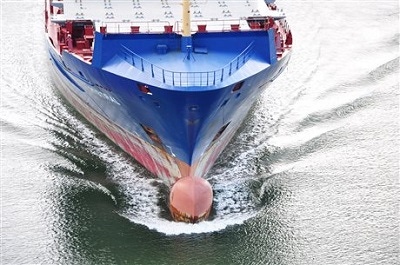Up to now, freighters have been made exclusively from steel. However, sustainable construction principles and modern materials, such as fiber-reinforced composites, may be finding their way into the shipyards of the future.
July 5, 2017

The transition is being made potentially possible by a total of 37 partners from 13 countries, who began working together in June 2017 on the RAMSSES (Realisation and Demonstration of Advanced Material Solutions for Sustainable and Efficient Ships) project sponsored by the EU.
|
All-composite ship hulls will reduce energy and maintenance costs. |
Part of the Horizon 2020 research and innovation program, the project is expected to last for four years and will receive EUR10.8 million in EU funding. In addition to Evonik, the consortium also includes leading shipbuilders such as Meyer-Werft, Papenburg, and Damen Shipbuilding of the Netherlands. These organizations are joined by established parts and equipment manufacturers such as Becker Marine Systems of Hamburg.
The project partners aim to produce a hull made out of fiber-reinforced composites of roughly 70 meters in length, which they will then test under real-life conditions on the high seas. The primary job of the Evonik experts is to improve the impact resistance and fatigue behavior of the finished hull, which will be made of fiber glass and vinyl ester resin.
Hulls made using lightweight construction techniques and modern materials will weigh less than half what their steel counterparts weigh. Demand for sustainable solutions like this is enormous, as the number of container ships in operation is constantly growing in response to the global volume of commercial trading. This also coincides with the increasing popularity of cruises and growth of ferry traffic. The new hulls will do more than simply save shipbuilding resources—ships will also be less expensive to operate due either to lower fuel demands or to greater cargo capacity. Plus, the new material will meet the sophisticated demands of the shipbuilding industry, which continues to grow in areas such as ferry construction. Another enormous advantage of fiber-reinforced composites is that they don’t rust. Their excellent resistance to seawater will mean having to renew protective finishes less often, which, in turn, will extend maintenance intervals and reduce operating costs still further.
Shipbuilding is not the only area, however, where optimized, impact-resistant vinyl ester resins are drawing attention: their unique properties are also useful in applications such as piping systems, large pipelines, containers, and airport radar masts.
About the Author(s)
You May Also Like





